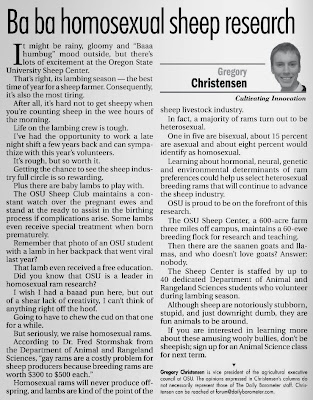PHOTO: A letter from Congressman Peter DeFazio responding to my IRS ADA complaint by starting a Congressional investigation on the matter. He said he read the letter to the editor by me, Thomas Kraemer, "IRS ignores plea for help,"Gazette-Times, Feb. 5, 2012, p. D5. See my previous posts IRS tax forms are not low vision accessible and violate ADA law (2/5/12) and Congressman Peter DeFazio responds to my IRS ADA complaint (2/19/12).
I was glad to see the IRS Website is now more accessible and complying with the ADA, so I wrote the following letter to the editor to the editor thanking my Congressman:
It is tax time and as somebody with low-vision blindness, I noticed the IRS Website is now legally complying with the "Americans with Disabilities Act," likely thanks to an inquiry made on my behalf by U.S. Rep. Peter DeFazio.
Unfortunately, I still can't electronically file with the IRS's "Free File Fillable Forms" method because it doesn't yet support reporting my retirement savings income from a very common and safe ten-year long ladder of inflation protected U.S. Treasury Bonds (aka TIPS).
Corvallis citizens like me, who must file paper tax returns, are being forced by the IRS to request paper tax forms and instructions by either placing orders online, which in my experience are still unfulfilled months later, or by calling a phone number that never answered my calls.
Liberals blame rich Republicans for cutting the IRS budget in retaliation for being audited.
Conservatives blame Democrats' desire to go paperless for environmental reasons.
Everyone supports better IRS efficiency, but forcing millions of taxpayers to download and print forms and instructions makes no sense when the IRS can print and mail them for less cost and less environmental damage.
Oregon similarly requires taxpayers to waste a ten-minute long phone call and wait a week to get preprinted state tax forms.
For better efficiency, taxpayers should be able to check a box on each year's tax return to request tax forms and instructions be automatically mailed to them for the next tax year.
This letter was inspired from both personal experience and after reading the article by Stephen Ohlemacher, Associated Press, "Need help filling out your tax return? Don't call the IRS," seattletimes.com originally published January 14, 2015 at 6:21 pm Updated January 14, 2015 at 8:31 pm. Also, the articles from Bloomberg, Staff, "Why Filing Tax Returns Is Going to Be tougher," BusinessWeek, Jan. 26-Feb. 1, 2015, p. 10 (not free online) and Staff, "Keeping Thieves From Your Tax Returns," BusinessWeek, Feb. 23-Mar-1, 2015, p. 12 (not free online).
The misleading headline to my letter, written by the newspaper's editor and not me, caused some readers to be misled, as evidenced by an online comment to my letter that twisted and misconstrued my points, perhaps unintentionally or perhaps on purpose, as is often the case with anonymous online comments:
"Your inability to enter data in a form when the form has no place for it has nothing to do with you being low-vision, and claiming that you are a victim of discrimination because of that is silly. As for local download and print being less environmentally sound and more costly, you are simply wrong. It is much more environmentally friendly for only those who need the forms to use the paper to print them. The IRS would have to print tens if not hundreds of thousands of forms just in case someone asked for them, and the cost of forms that most people don't need would be passed on to those who have no need for the forms. In short, on-demand printing reduces paper waste (environmentally friendly) and puts the cost onto those who need the service (cheaper overall)." (Quoted from TheRealJules Comment at gazettetimes.com posted Feb. 27, 2015)
To which I replied, mostly to the newspaper as a correction to the headline for my letter that changed its meaning:
Some readers were misled by the headline, written by a probably overworked Gazette-Times editor, for my Feb. 27 letter, "IRS filing rules are unfair to low-vision taxpayers."
In fact, my letter noted the IRS Website is now low vision accessible, unlike before.
Consequently, one online comment misconstrued my other point that all taxpayers, including fully-sighted ones who are required by the IRS to file paper tax returns, are now being served by a less efficient process due to political gamesmanship on both sides of the aisle.
(Quoted from Thomas Kraemer, "Letters: In fact, IRS has offered assistance to low-vision taxpayers," Gazette-Times, Mar. 5, 2015)
A bigger issue, not in my letter due to limited space, but it was noted by Businessweek is that the increased hassle factor of filing this year and the fewer audits made by the IRS due to budget cuts by Republicans, will possibly lead to a lower compliance rate by taxpayers and therefore less tax revenue to fund government services.
The issue the letter raised in my letter about TIPS income not yet being reportable via any free e-filing method, is an issue for everybody and NOT related to my low-vision blindness -- many people still can't e-file because the IRS software doesn't yet support doing many things for various technical reasons as well as political reasons.
The distorted logic of the commentator's dogmatic assertion that on-demand publishing is more efficient is probably the same illogic used by the IRS in order to justify the outsourcing of the paper forms process. In fact, so far all of the paper forms I've received have been pre-printed and not printed on-demand, plus they have been individually stuffed in envelopes and mailed to me at a cost of over a dollar per item, whereas before when the IRS sent me only one tax page for a fraction of the cost via bulk mail. By any definition, this is a less efficient process and all taxpayers are paying for it.










